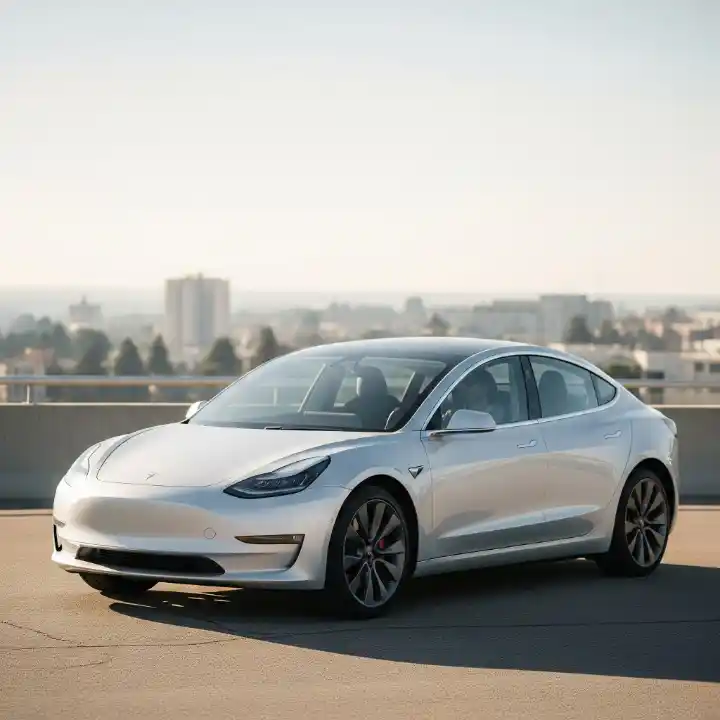This article decodes Tesla robotaxi for business and finance leaders to turn headlines into insight, while highlighting what matters for your strategy and what you need to avoid.
Why Tesla Robotaxi Is Making Headlines
Tesla’s robotaxi has shifted from a bold promise to a real pilot, launching in the Bay Area. The company has started inviting select Tesla owners to use the paid robotaxi service spanning a geofenced chunk of the Bay, from Marin and the East Bay to San Jose and San Francisco. Unlike standard cabs or Ubers, these rides feature a Tesla vehicle operating in self-driving mode with a human “safety driver” at first, regulatory rules demand human oversight, for now.
Why is this story dominating business news?
-
First-mover reality: While Waymo and Cruise compete, Tesla wields the world’s largest fleet of connected vehicles and a direct path from production to robotaxi.
-
Business model shift: The service moves Tesla from a pure automaker to a mobility platform—turning cars into ongoing revenue streams rather than one-time sales.
-
Market signal: For investors and business strategists, Tesla’s robotaxi could mark a shift in how urban transportation models and auto valuations are built.
How Tesla Robotaxi Flips the Script?
1. The Robotaxi Model: Recurring Revenue, Not One-and-Done Sales
Traditional auto players win or lose on selling cars. Tesla’s robotaxi vision is different, picture Amazon AWS for transportation. Instead of selling a vehicle (and hoping for another sale in seven years), each Tesla robotaxi becomes a per-mile revenue engine, able to generate $35,000–$70,000 annually at scale, based on modest average fares and utilization rates over 70,000 miles a year.
-
No human driver cost equals lean margins: The biggest cost in traditional ride-hailing (Uber, Lyft) is the driver. Tesla’s pitch is that robotaxis slash labor overhead, allowing for persistently high margins and 24/7 fleet utilization.
-
Direct-to-consumer rides: Instead of a full fleet operator, Tesla can tap its existing network, diversifying revenue with both company-owned and privately-owned robotaxis via software subscriptions.
2. The Launch: What’s Actually Happening in San Francisco
Tesla’s 2025 Bay Area pilot isn’t fully driverless yet. Instead, selected Tesla owners get invites to hail rides in geofenced city regions, always with a safety driver behind the wheel. This “hybrid autonomy” approach helps build regulatory trust, gather road data, and test user acceptance while avoiding the legal minefield of full autonomy.
-
Not open to all: Access is being gated, with only invited users and select payment options for the pilot phase.
-
Scope: Service spans Marin, the East Bay, San Francisco proper, and south to San Jose.
3. Key Business and Financial Insights
-
Massive potential: Analysts peg the robotaxi market as a multi-trillion-dollar opportunity by 2040, with Tesla aiming for a 35% share versus traditional rivals and tech giants.
-
Strong operating leverage: With vertical integration; software, hardware, AI; Tesla could keep up to 60% EBITDA margins, far above industry norms if scaling succeeds.
-
Market catalyst: Even as Tesla’s legacy car sales soften and profits dip, anticipation of robotaxi as a profit engine is energizing investors and igniting strategic debates.
Real-World Challenges and the Lessons for Business
Regulatory and Operational Hurdles
-
Permits and oversight: Tesla has not yet applied for permits for fully driverless service in California, and is currently required to have a safety operator in the vehicle. In the pilot, regulatory ambiguity means careful, incremental steps, with ongoing agency oversight.
-
Execution risk: Large-scale robotaxi deployment requires bulletproof software, vast data, and public trust. Execution errors (in tech, comms, or safety) could slow rollouts and spook the market.
-
Unit economics: Behind the excitement, internal debates at Tesla show payback periods and robotaxi margins may take years to reach projections especially if utilization or pricing falls short.
Competitive Pressures
Waymo and Cruise have already launched driverless ride-hailing in parts of the U.S., and regulatory wins in new markets could see rivals surge ahead if Tesla doesn’t overcome software and legal challenges fast.
Trust, Safety, and Brand Equity
-
Public acceptance: A single bad incident can torpedo years of progress. Business reputation and persistent safety transparency will be critical.
-
Insurance, liability, and compliance: New risk models are essential as Tesla must account for responsibility across software, vehicle, and cloud systems.
Business Action Points: Stealing Lessons from Tesla Robotaxi
-
Think platform, not product: Subscription, per-use, or hybrid revenue models can drive stickier, more profitable growth.
-
Edge with data: Like Tesla, leverage big data and AI not just for product improvement, but for ongoing user insight and new service launches.
-
Start narrow, scale smart: Tesla’s geofenced launch shows the value of pilot-first thinking. Test, measure, adapt, then scale to new cities or segments.
-
Engage regulators early and often: Partnering and clear communication can smooth rollout, avoid costly legal fights, and boost brand trust in emerging sectors.
Common Traps And How to Avoid Them
-
Overpromising timelines: Tech breakthroughs take longer and involve more regulatory friction than pitch decks imply.
-
Ignoring the human factor: Customer trust and adoption move slower than algorithms; prioritize education and real-world outreach.
-
Chasing buzz, missing numbers: Focus not just on TAM (total addressable market), but on sustainable cost, utilization, and margin targets.
Conclusion: Tesla Robotaxi’s Takeoff, Blueprint or Beta?
Tesla robotaxi isn’t just a new ride-hailing option; it’s a possible inflection point for asset-light, software-powered transportation. For business and finance audiences, the key is balancing visionary upside with practical hurdles in regulatory, operational, and brand execution. As Tesla moves from prototype to streets, every leader, whether in mobility, tech, or finance, should be watching, learning, and preparing to adapt.
What would robotaxi scale mean for your business or city?
Share your thoughts below, or connect with a transformation expert for a readiness review.





